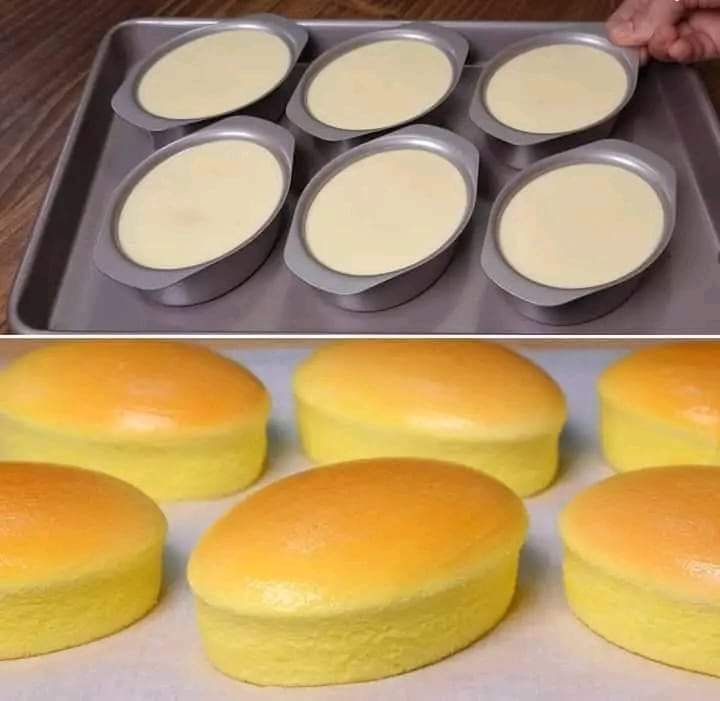Step 1: Prepare the Cake Pan
- Line the Pan: Grease the sides of an 8-inch round cake pan with butter and line the bottom with parchment paper. You can also line the sides with parchment paper to help the cheesecake rise evenly during baking.
- Preheat the Oven: Preheat your oven to 320°F (160°C). Prepare a water bath by placing a shallow tray or pan in the lower rack of the oven. You will add hot water later during baking to help prevent cracks in the cheesecake.
Step 2: Make the Cream Cheese Mixture
- Heat the Milk, Butter, and Cream Cheese: In a medium saucepan, combine cream cheese, butter, and milk. Heat over low heat, stirring constantly until the mixture is smooth and the butter is melted. Be careful not to let it boil.
- Add Vanilla: Once smooth, stir in the vanilla extract and remove from heat. Set aside to cool slightly.
Step 3: Prepare the Dry Ingredients
- Sift the Flour and Cornstarch: In a separate bowl, sift together the cake flour and cornstarch. This ensures there are no lumps and that the flour is evenly distributed.
Step 4: Mix Egg Yolks
- Combine with Cream Cheese Mixture: Add the egg yolks one at a time to the cream cheese mixture, mixing well after each addition.
- Add the Dry Ingredients: Gradually fold in the sifted flour and cornstarch mixture until the batter is smooth and there are no lumps.
Step 5: Whisk the Egg Whites
- Beat the Egg Whites: In a clean mixing bowl, beat the egg whites with a pinch of salt using an electric mixer on medium speed until the mixture becomes frothy.
- Add Cream of Tartar: Add cream of tartar and increase the mixer speed to high. Gradually add 70g (1/3 cup) of granulated sugar, about a tablespoon at a time, until stiff peaks form. The egg whites should be glossy and hold their shape when you lift the whisk.
Step 6: Fold Egg Whites into Batter
- Fold Gently: Gently fold the whipped egg whites into the cream cheese batter in three additions. Start by adding a third of the whipped egg whites, mixing lightly to lighten the batter. Then add the remaining whites and fold carefully, being sure not to deflate the mixture.
- Consistency: The final batter should be smooth and airy, but not overmixed.
Step 7: Bake the Cheesecake
- Pour into Pan: Pour the batter into the prepared cake pan. Tap the pan lightly on the counter to remove any large air bubbles.
- Prepare the Water Bath: Place the cake pan into a larger, deep pan, then pour hot water into the larger pan until it reaches halfway up the sides of the cake pan. This water bath will help the cheesecake cook gently, preventing cracks.
- Bake: Bake the cheesecake in the preheated oven at 320°F (160°C) for 60-70 minutes. The cake should be golden brown on top and slightly jiggly in the center when done. You can check with a toothpick, but it should still be moist.
- Cool in the Oven: Once the cheesecake is done, turn off the oven and leave the door slightly ajar. Let the cake cool in the oven for 1 hour. This gradual cooling helps prevent it from sinking too much.
Step 8: Cool and Serve
- Remove from Oven: After cooling, remove the cheesecake from the oven and water bath. Allow it to cool completely at room temperature before refrigerating.
- Chill: For best results, chill the cheesecake in the refrigerator for at least 4 hours, or overnight if possible. This allows the texture to set fully.
- Unmold the Cheesecake: Once chilled, run a knife around the edge of the cake to loosen it from the sides of the pan. Carefully remove the springform pan sides, and transfer the cheesecake to a serving platter.
- Garnish and Serve: Dust the top of the cheesecake with a light sprinkle of powdered sugar. Optionally, serve with fresh fruit like berries or whipped cream for added decoration.
Tips for Success
- Room Temperature Ingredients: Make sure your cream cheese, butter, and eggs are at room temperature for the smoothest batter.
- Don’t Overmix the Egg Whites: Be careful when folding the egg whites into the batter. Overmixing can deflate the meringue and result in a denser cheesecake.
- Water Bath: The water bath ensures even baking and prevents cracking. Be sure to pour hot water carefully and don’t let it touch the cheesecake batter.
- Patience: Let the cheesecake cool and set properly before serving. This helps maintain its delicate texture.
Variations
- Flavor Add-ins: For a different flavor, try adding a small amount of lemon zest or matcha powder to the batter before baking.
- Toppings: Serve with fresh fruit like strawberries, blueberries, or raspberries for a refreshing contrast to the creamy cheesecake. Alternatively, drizzle with a fruit syrup or honey.
Final Thoughts on Japanese Cheesecake
This Japanese Cheesecake is the perfect dessert for those who love light, airy, and subtly sweet treats. Its fluffy texture and delicate flavor make it stand out from traditional cheesecakes. Whether served plain or adorned with fresh fruit, this cheesecake will surely be a crowd-pleaser at any gathering. Enjoy each melt-in-your-mouth bite!
